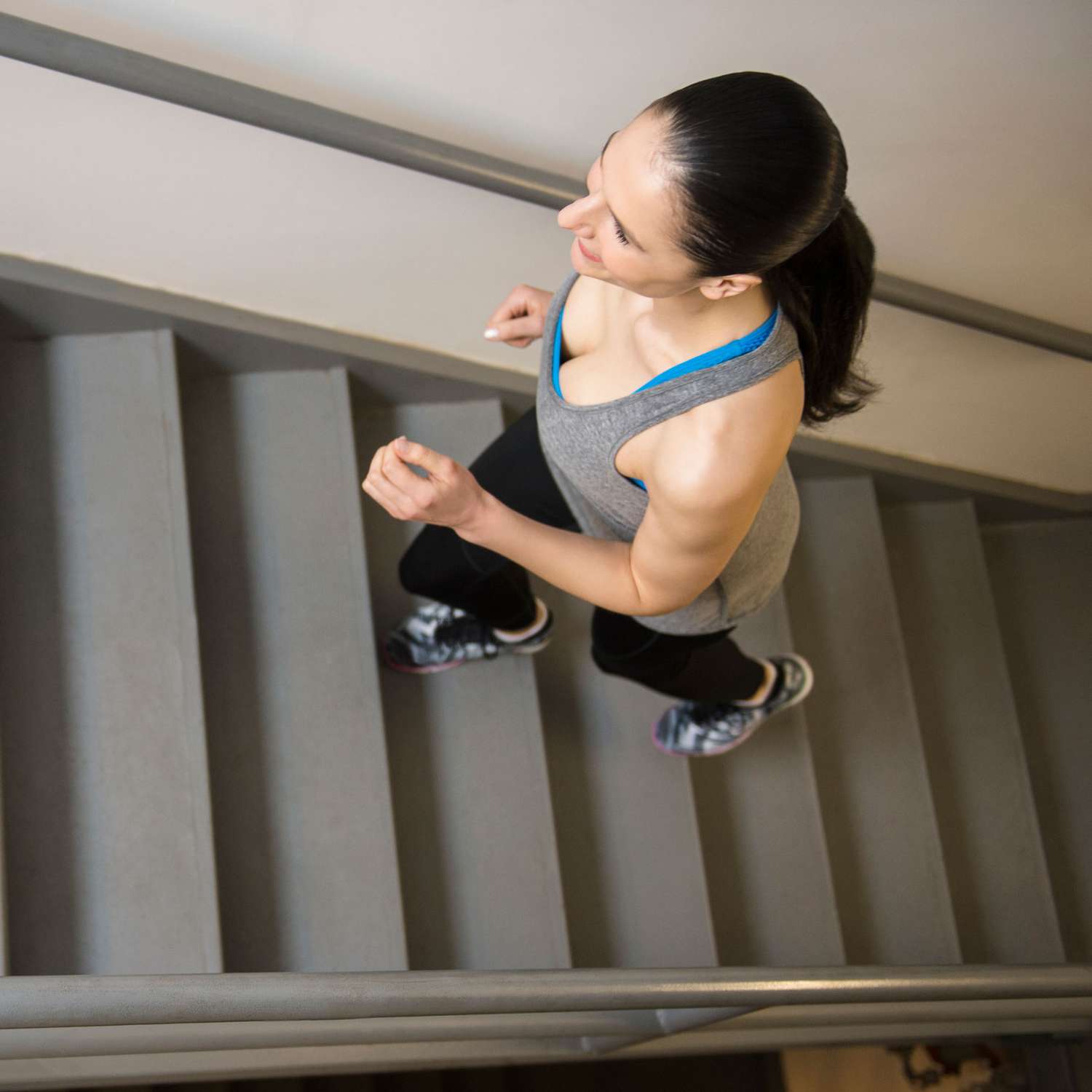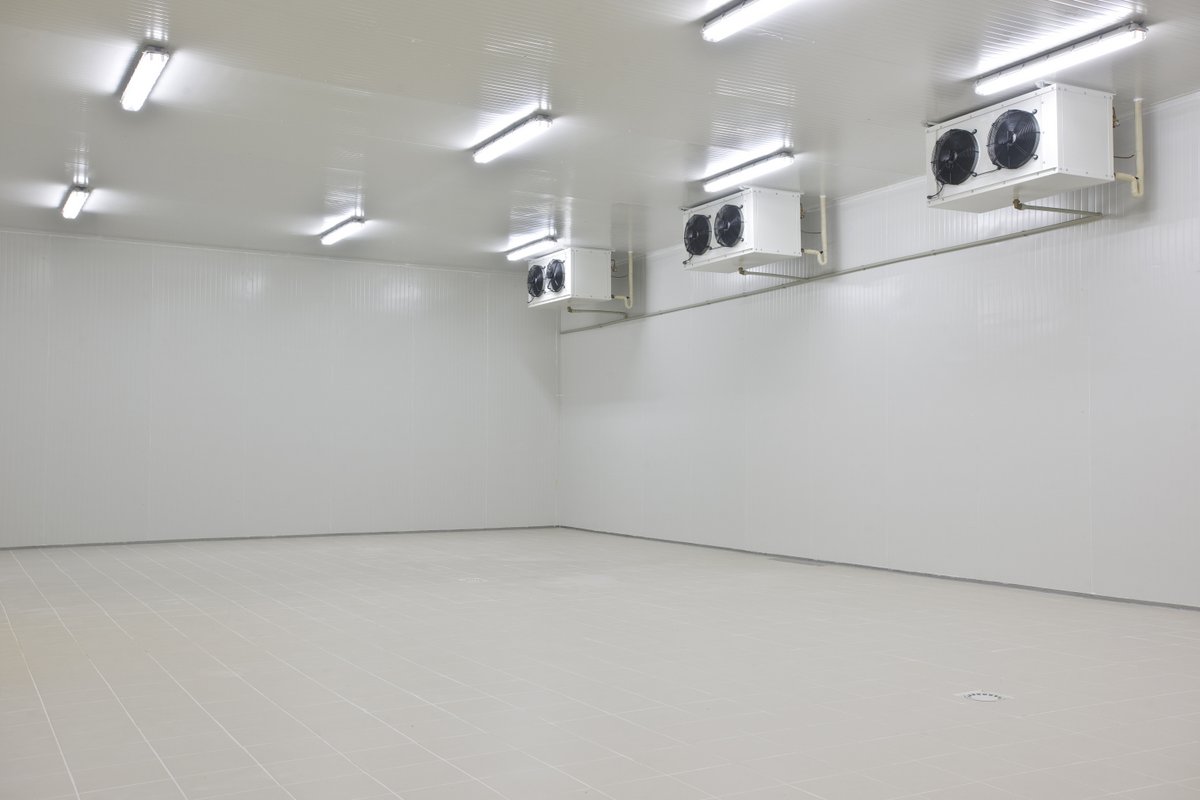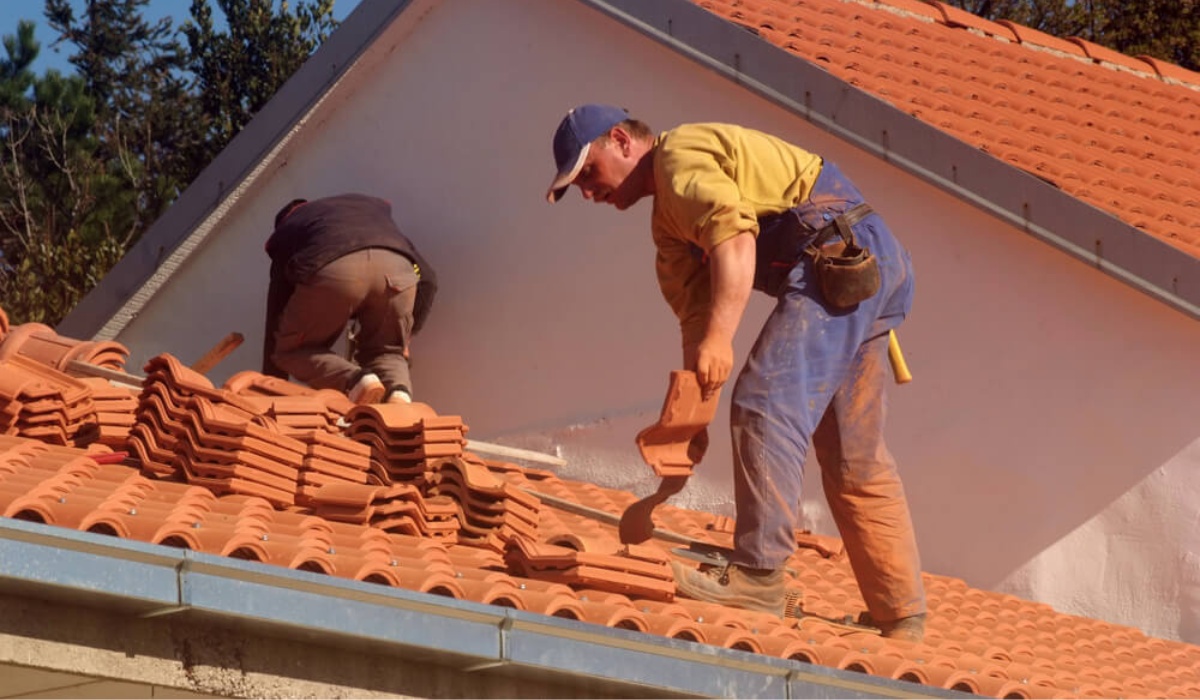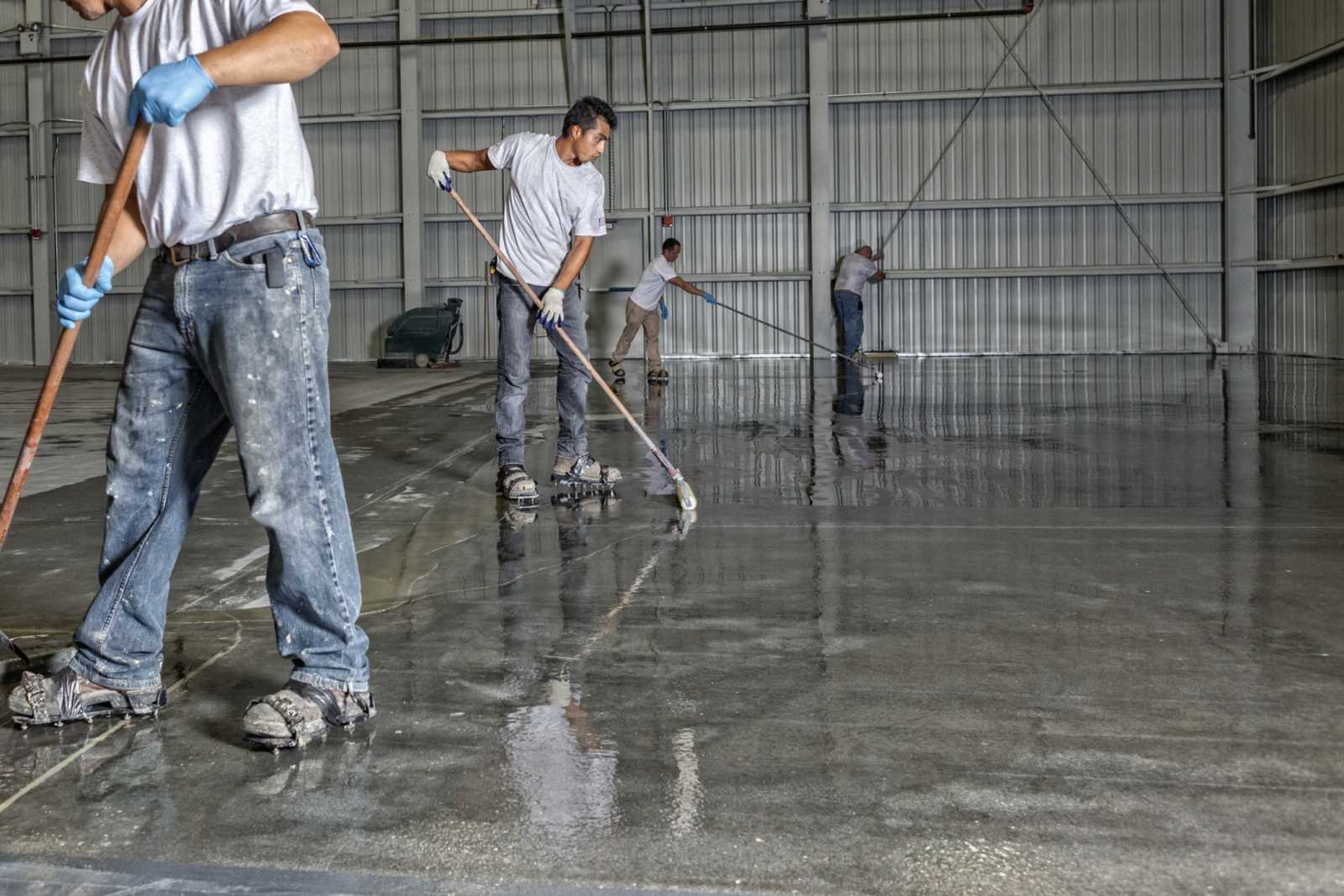

Articles
How To Walk In An Attic
Modified: October 31, 2024
Learn how to safely navigate and walk in an attic with our informative articles. Discover essential tips and techniques for attic exploration and maintenance.
(Many of the links in this article redirect to a specific reviewed product. Your purchase of these products through affiliate links helps to generate commission for Storables.com, at no extra cost. Learn more)
Introduction
Walking in an attic can be a challenging and potentially dangerous task if not done properly. Whether you need to inspect your attic, retrieve something stored there, or perform maintenance tasks, it’s important to take the necessary precautions to ensure your safety. In this article, we will guide you through the steps to safely walk in an attic.
Attics are often cramped, dark spaces with uneven flooring and limited headroom. It’s essential to prepare well and be mindful of potential safety hazards to avoid accidents. By following these steps and maintaining caution throughout, you can navigate through your attic with confidence.
Before entering the attic, take a moment to assess the situation and gather the required tools. Dressing appropriately, checking for safety hazards, and ensuring proper lighting are key factors in ensuring a safe attic walk. Remember, the goal is to complete your task effectively while prioritizing your well-being.
Key Takeaways:
- Prioritize safety by preparing, dressing appropriately, checking for hazards, and using proper lighting when walking in an attic. Take deliberate steps, maintain posture, and be mindful of insulation and obstacles for a hazard-free experience.
- Clear clutter, watch your step, and exit the attic safely to conclude a successful and secure attic walk. By following these steps, you can confidently navigate through your attic and maintain a safe environment.
Step 1: Prepare for Attic Walk
Before stepping foot in the attic, it’s crucial to prepare yourself for a safe and successful walk. Proper preparation includes gathering the necessary tools and ensuring you have a clear understanding of the task at hand.
Start by identifying the purpose of your attic walk. Are you going up to inspect for potential damage, retrieve an item, or perform maintenance? Knowing the reason behind your visit will help you plan accordingly and stay focused.
Next, gather the appropriate tools for the job. This may include a flashlight or headlamp, a sturdy ladder, gloves, a mask for dust protection, and any specific tools needed for the task. Having these items within reach will save you time and minimize the risk of accidents.
It’s also essential to inform others in your household about your attic walk. Let them know where you’ll be and for how long, especially if you’ll be working alone. This way, if an emergency arises, someone will be aware and able to assist you if needed.
Lastly, create a plan of action for your attic walk. Determine the areas you need to access, the order in which you’ll do so, and any specific precautions you should take for each area. Planning ahead will save you from unnecessary confusion and help you navigate the attic more efficiently.
By preparing for your attic walk ahead of time, you set the foundation for a safe and productive exploration. Remember to double-check your tools and plan your route to ensure a smooth and successful experience.
Step 2: Dress Appropriately
When walking in an attic, dressing appropriately is vital to ensure your comfort, protection, and overall safety. Attics can have extreme temperatures, dust, and potential hazards, so it’s important to choose your attire wisely.
Start by wearing long sleeves and pants to protect your skin from any potential irritants or sharp objects. Opt for lightweight and breathable fabrics, especially if you’ll be working in a hot attic. This will help you stay comfortable and prevent overheating.
It’s also crucial to wear closed-toe shoes with slip-resistant soles. Attics often have slippery or uneven surfaces, and proper footwear will provide better traction and stability as you move around. Avoid wearing high heels, sandals, or any footwear that leaves your feet exposed.
Additionally, consider wearing a hat or a bandana to protect your head from any debris that may fall from the attic ceiling. A hat can also help shield your eyes from bright lights or excessive dust.
Another important aspect of dressing appropriately for an attic walk is using protective gear. If you know the attic may have dust or insulation particles, wear a mask to protect your respiratory system. N95 or higher-rated masks are recommended for filtering out small particles effectively.
Lastly, wearing gloves is essential to protect your hands from potential cuts, scrapes, or contact with harmful substances. Choose gloves that are durable and provide good grip to handle objects safely.
By dressing appropriately for an attic walk, you minimize the risk of injuries and discomfort. Remember, your clothing and gear should prioritize your safety and allow you to move and work comfortably in the attic environment.
Step 3: Check for Safety Hazards
Prior to walking in an attic, it’s essential to thoroughly inspect the space for any safety hazards that could put you at risk. Attics can present various dangers, including electrical hazards, structural issues, and potential pests. Taking the time to assess these hazards will help prevent accidents and ensure your well-being during your attic walk.
Start by checking the attic entrance or ladder for stability. Ensure that it is secure and in good condition before using it to access the attic. Wobbly ladders or unstable entrances can lead to falls and serious injuries.
Next, inspect the attic for any electrical hazards. Make sure to turn off the power to the attic before entering, especially if you will be working near electrical wiring or fixtures. If you’re unsure how to safely disconnect the power, it’s best to consult a professional electrician.
Additionally, look out for any signs of structural damage such as sagging ceilings, cracks, or unstable flooring. These issues can pose significant hazards and should be addressed promptly. If you notice any structural concerns, it is recommended to consult a professional before proceeding into the attic.
Keep an eye out for potential pest infestations as well. Attics are often home to rodents, insects, and other unwanted critters. Look for droppings, chewed wires, or nests, and take necessary precautions to ensure your safety and avoid disturbing any inhabitants.
Lastly, be aware of any potential air quality issues. Attics can have poor ventilation, excessive dust, or potential mold growth. If you notice a strong musty odor or observe signs of mold, it is advisable to consult a professional to assess and address the air quality concern.
Checking for safety hazards in the attic is crucial for protecting yourself from potential injuries and health risks. By being mindful of these hazards and taking necessary precautions, you can ensure a safer attic walk experience.
Step 4: Use Proper Lighting
Having adequate lighting is paramount for a safe and successful attic walk. Attics are often dimly lit spaces with limited natural light, making it difficult to navigate and identify potential hazards. By ensuring proper lighting, you can enhance visibility and minimize the risk of accidents.
If your attic has access to natural light, open any windows or vents to maximize the amount of daylight entering the space. This will help brighten up the area and make it easier to see as you move around.
However, in many cases, attics lack sufficient natural light, especially if they have no windows or skylights. In such situations, it’s crucial to bring a reliable and portable light source with you. A flashlight or a headlamp is ideal for providing hands-free illumination as you navigate the attic.
When choosing a flashlight or headlamp, opt for models that offer a bright, focused beam to illuminate specific areas. Adjustable intensity settings can be useful for conserving battery power or adjusting the brightness according to your needs.
If possible, consider using a work light or temporary lighting setup, especially if you’ll be spending a significant amount of time in the attic. These types of lights typically provide a wider coverage area and better overall visibility.
Regardless of the type of lighting you use, make sure it is in good working condition and has sufficient battery life or power source. Test it before entering the attic to avoid any sudden failures and potential accidents due to a lack of light.
Proper lighting is essential for preventing trips, falls, and other accidents in the attic. By ensuring adequate illumination, you can navigate the space with greater confidence and minimize the risk of injuries.
Read more: How To Walk On Roof
Step 5: Walk with Caution
When walking in an attic, it’s crucial to proceed with caution. Attics can have narrow walkways, low ceilings, and obstacles, making it important to prioritize your safety throughout the entire journey.
Start by taking small, deliberate steps to maintain your balance and stability. Attics often have uneven or slippery surfaces, so walking slowly and deliberately will help prevent slips and falls.
Be mindful of your headroom and watch out for low-hanging beams or ceiling obstructions. Crouching or bending your knees slightly can help you navigate through areas with limited clearance, reducing the risk of head injuries.
If your attic has exposed nails or sharp objects, be extra cautious to avoid accidentally stepping on them. Scan the floor carefully and, if possible, use a flashlight to enhance visibility and identify any potential hazards.
When moving from one area to another, use your hands and arms for support, especially if there are no stable surfaces to hold onto. This will provide added stability and minimize the risk of losing your balance.
Additionally, avoid rushing and be mindful of your surroundings. Take your time to carefully navigate around any objects, tools, or stored items in the attic. Avoid unnecessary movements or sudden turns that can throw off your balance.
If you need to reach for something or perform a task that requires you to lean or stretch, do so with caution. Always ensure your footing is secure and stable before reaching out to prevent falls or accidents.
By walking with caution in the attic, you prioritize your safety and reduce the risk of injuries. Remember to move deliberately, watch your headroom, and be aware of potential hazards throughout your attic walk.
Be sure to wear appropriate footwear with good traction when walking in an attic to avoid slipping on any loose insulation or debris.
Step 6: Maintain Proper Posture
Maintaining proper posture while walking in an attic is important for your overall comfort, stability, and safety. Attics often have limited headroom and cramped spaces, making it crucial to be mindful of your body positioning throughout your journey.
Firstly, stand tall and keep your back straight to promote good posture. Avoid hunching or slouching, as this can strain your back and lead to discomfort or fatigue.
Keep your shoulders relaxed and allow them to drop naturally. This will help release tension and promote better balance as you navigate through the attic.
Engage your core muscles by tightening your abdominal muscles slightly. This will provide additional stability and support to your spine, reducing the risk of falls or injuries.
When walking in the attic, take small, controlled steps. Avoid overstriding or shuffling your feet, as these movements can throw off your balance and increase the likelihood of tripping.
Be mindful of your head position and avoid looking down excessively. Keep your gaze at eye level or slightly ahead to maintain better awareness of your surroundings.
In tight spaces or areas with low ceilings, bend your knees slightly and take shorter steps to lower your center of gravity. This will help you maintain better stability and reduce the risk of bumping into or tripping over obstacles.
Lastly, if you need to reach for something in the attic, avoid overextending or straining your body. Instead, step closer to the object if possible, or use a tool with a long handle to access it without compromising your posture.
By maintaining proper posture while walking in the attic, you minimize the risk of discomfort, fatigue, and injuries. Remember to stand tall, engage your core muscles, and take small, controlled steps to ensure a safe and comfortable attic walk.
Step 7: Watch Your Step
Being mindful of where you step is crucial for a safe and accident-free attic walk. Attics can have uneven surfaces, debris, and hidden hazards, so it’s important to pay attention to your footing at all times.
Start by scanning the floor in front of you as you move. Look for any loose boards, nails, or other objects that could cause trips or injuries. Take your time to navigate around these hazards or secure any loose flooring to ensure a stable walking surface.
If the attic has insulation, be cautious of stepping on it. Insulation can be easily compressed or displaced, leading to instability and potential falls. Try to step on the structural components or beams to maintain a steady footing.
Keep an eye out for any wiring or cables that may be exposed in the attic. Avoid stepping on or tripping over these, as they can pose electrical hazards. If you notice any exposed wiring, it’s crucial to have it inspected and repaired by a qualified professional.
Be cautious of any protruding objects, such as pipes or ductwork, that may be hanging from the ceiling or walls. These can pose a head or body injury risk if you accidentally bump into them. Take care to walk around them or crouch if necessary to avoid contact.
If the attic has storage items or boxes, be mindful of any potential obstacles in your path. Clear a path or move objects out of the way to create a safe and unobstructed walking area. This will help prevent tripping or falling over clutter.
Lastly, watch out for any changes in flooring level or transitions between different materials. These transitions can be uneven or slippery, so take care to navigate them with caution. Use handrails or other stable supports for balance as needed.
By watching your step and being mindful of potential hazards, you reduce the risk of accidents and injuries during your attic walk. Stay attentive, scan the floor, and make necessary adjustments to maintain a safe and stable footing throughout your journey.
Step 8: Avoid Clutter and Obstacles
Clearing clutter and being aware of potential obstacles is essential for a safe and hassle-free attic walk. Attics can accumulate storage items, debris, and other objects over time, making it important to keep the space organized and free from any potential hindrances.
Start by decluttering the attic before attempting to walk through it. Remove any unnecessary items or boxes that are blocking your path or impeding your movement. Clearing the space will not only create a safer environment but also allow for easier navigation.
Take the time to properly organize any remaining storage items. Use shelves, bins, or storage containers to keep items neatly arranged and out of the way. This will minimize the risk of tripping over misplaced items as you walk in the attic.
Be aware of any hanging objects, such as low-hanging wires, pipes, or ductwork. Ensure that these are properly secured and not obstructing your path. If you notice any loose or dangling objects, take the necessary steps to secure them or move them out of your way.
Look out for any potential obstacles or obstructions on the floor, such as tools, equipment, or loose floorboards. These can pose trip hazards or cause you to lose your balance. Take the time to move or secure these objects to create a clear and safe walking area.
If you encounter large or bulky objects that cannot be easily moved, navigate around them with caution. Take wider steps or create a clear pathway around these obstacles to ensure a smooth and safe attic walk.
Regularly inspect the attic for any signs of water leakage, mold growth, or infestation. These issues can lead to additional clutter or potential health hazards. Address these issues promptly and consult professionals if needed to rectify the situation safely.
By avoiding clutter and being mindful of obstacles, you can create a clear and safe path for your attic walk. Take the time to declutter, organize storage items, and remove any potential hindrances to ensure a smooth and unobstructed journey.
Read more: How To Walk On A Metal Roof
Step 9: Be Mindful of Insulation
When walking in an attic, it’s important to be mindful of the insulation present. Attics are often insulated to regulate temperature and conserve energy. However, insulation materials can be hazardous if mishandled, so it’s essential to take precautions to protect yourself and the integrity of the insulation.
Insulation materials, such as fiberglass or cellulose, can cause skin irritation and respiratory issues if you come into direct contact or breathe in the fibers. To minimize exposure, it’s advisable to wear long sleeves, long pants, gloves, and a mask or respirator specifically designed for insulation work.
Avoid disturbing or displacing insulation unnecessarily. Insulation acts as a thermal barrier and helps maintain energy efficiency within your home. If you need to access a specific area, carefully move the insulation aside without damaging or compressing it excessively.
When walking in the attic, be cautious of stepping on insulation. Insulation can easily be compressed or displaced, potentially compromising its effectiveness and reducing its insulating properties. Try to step on structural components or beams instead of directly stepping on the insulation.
If you need to handle insulation, follow manufacturer guidelines and recommendations. Use appropriate tools and equipment, such as insulation knives or shears, to cut or shape insulation as needed. Ensure that cuts are clean and precise to minimize loose fibers.
Keep an eye out for any signs of damage or deterioration in the insulation. Moisture can impact the effectiveness of insulation and lead to mold or mildew growth. If you notice any issues, consider consulting an insulation professional to assess and address the situation.
It’s important to note that certain older types of insulation, such as asbestos insulation, can be hazardous to health. If you suspect your attic may have asbestos-containing insulation, it’s crucial to contact an asbestos abatement professional to assess and handle the situation appropriately.
By being mindful of insulation and following proper handling procedures, you can protect yourself and ensure the insulation in your attic remains intact and effective. Take necessary precautions, minimize unnecessary disruption, and consult professionals when needed to maintain a safe and energy-efficient attic space.
Step 10: Exit the Attic Safely
Exiting the attic safely is just as important as entering it. By following proper procedures, you can ensure a smooth and safe transition from the attic back to the main living space. Here are some key steps to consider when exiting the attic:
- Double-check that you have taken all the necessary tools and equipment with you. Ensure that you haven’t left anything behind that could pose a safety risk or inconvenience later.
- Before descending any ladders or stairs, make sure they are stable and in good condition. Check for any loose or damaged steps or rungs. If you notice any issues, address them before attempting to climb down.
- Take your time when descending the ladder or stairs. Hold onto handrails for added stability and support. Keep your body weight centered and avoid leaning too far in any direction.
- As you exit the attic, be conscious of your head and body positioning. Watch for low ceilings or door frames that may require you to bend or duck. Maintain good posture and be mindful of any potential obstacles or hazards.
- Once you’ve safely descended from the attic, ensure that the attic access point is properly secured. This could involve closing and locking a door, replacing a hatch, or resealing any access panels. Taking these steps will help prevent accidental falls or unauthorized access to the attic space.
- Finally, take a moment to reflect on your attic walk and address any maintenance or safety concerns you may have encountered. Make a note of any repairs or improvements that may be necessary to ensure the attic remains a safe and functional space.
Exiting the attic safely is all about being mindful of your surroundings, maintaining good balance and posture, and taking the necessary precautions to avoid accidents. By following these steps, you can conclude your attic walk with confidence and peace of mind.
Conclusion
Walking in an attic can be a challenging task, but by following the proper steps and taking necessary precautions, you can ensure a safe and successful experience. From preparing for the attic walk to being mindful of safety hazards, dressing appropriately, using proper lighting, and maintaining proper posture, each step is crucial for your well-being.
Start by preparing for your attic walk, gathering the necessary tools, and informing others about your presence in the attic. Dress appropriately with protective clothing, closed-toe shoes, and essential safety gear such as gloves and masks. Check for safety hazards, like unstable entrances, electrical wiring, structural damage, and pest infestations, before entering the attic.
Ensure that you have adequate lighting to navigate the attic space effectively. Use proper lighting equipment such as flashlights or headlamps to enhance visibility and minimize the risk of accidents. Walk with caution, taking small and deliberate steps, watching your headroom, and being mindful of potential obstacles or hazards on the attic floor.
Avoid clutter and obstacles by decluttering the attic, organizing storage items, and clearing pathways. Be mindful of the insulation present, taking precautions to protect yourself and the integrity of the insulation. Follow proper handling procedures and be aware of any potential health hazards associated with insulation materials.
Finally, exit the attic safely by double-checking your tools and equipment, ensuring stable ladder or stairs, and being mindful of your head and body positioning. Secure the attic access point to prevent accidents and intrusion.
Remember, the key to a safe attic walk is being prepared, cautious, and aware of your surroundings. By following these steps, you can confidently and safely navigate through your attic, completing your tasks and maintaining a secure environment.
So, whether you’re inspecting, retrieving, or maintaining your attic, prioritize your safety throughout the entire process. Take the time to prepare, dress appropriately, assess safety hazards, and be mindful of insulation and potential obstacles. By doing so, you can ensure a successful and hazard-free attic walk every time.
Frequently Asked Questions about How To Walk In An Attic
Was this page helpful?
At Storables.com, we guarantee accurate and reliable information. Our content, validated by Expert Board Contributors, is crafted following stringent Editorial Policies. We're committed to providing you with well-researched, expert-backed insights for all your informational needs.














0 thoughts on “How To Walk In An Attic”